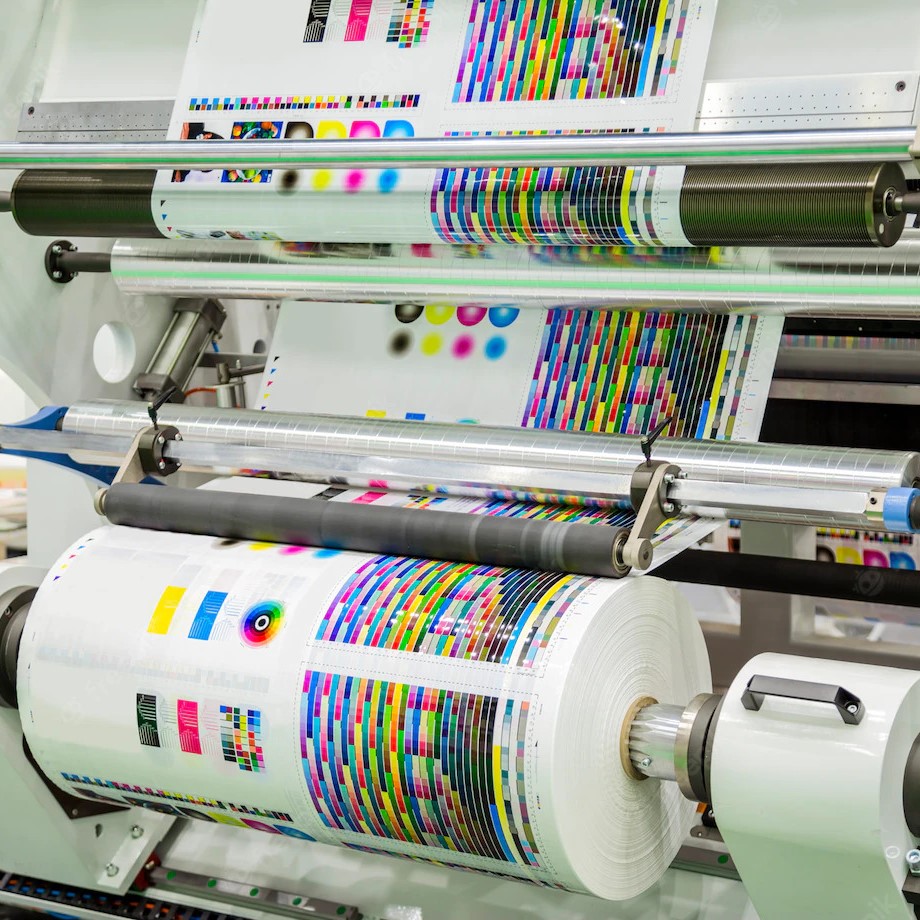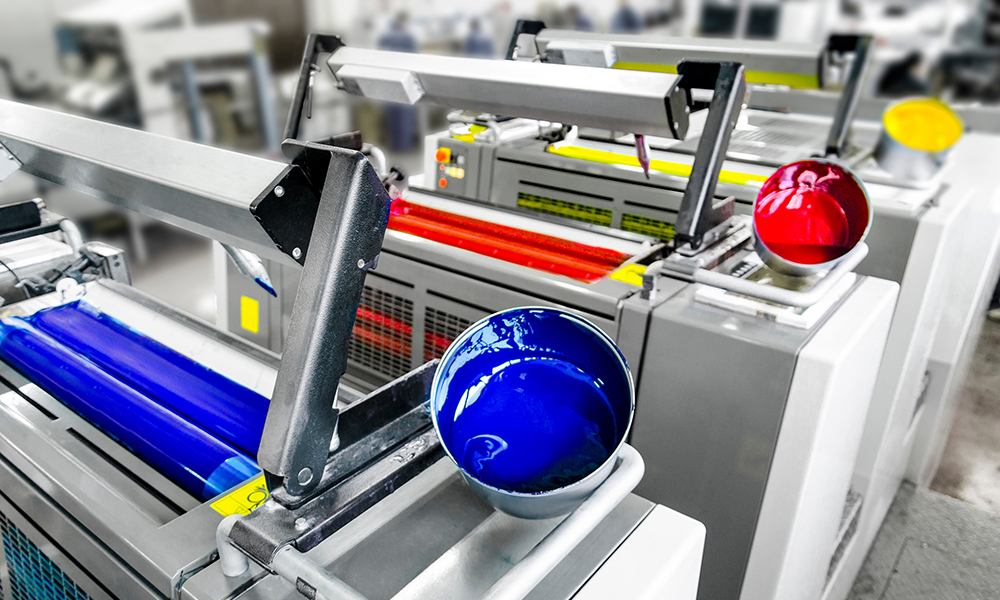The Essential Guide to Recognizing Litho Printing and Its Applications
Litho printing stands as a substantial approach in the printing market, rooted in the concepts of oil and water repulsion. This strategy not just supplies top quality photos but additionally satisfies different commercial demands. Its applications range from marketing materials to product packaging, showcasing its convenience. As the industry adapts to brand-new innovations, the evolution of litho printing questions concerning its future and importance in a digital landscape. What exists in advance for this withstanding method?

What Is Litho Printing?
Litho printing, an extensively used printing technique, relies upon the concept of oil and water repulsion. This approach employs a level printing surface, generally a steel plate, which is dealt with to guarantee that the photo locations are receptive to oil-based inks while the non-image locations repel them. The procedure begins with the production of a photo on home plate, usually via drawing or photo means. As soon as the image is prepared, home plate is wetted with water, followed by the application of ink. The ink sticks only to the picture locations, enabling accurate reproduction of graphics and message. Litho printing is favored for its capability to generate top notch prints with great detail and vibrant colors. It is typically utilized in business applications, including papers, publications, and product packaging, showcasing its flexibility and performance in satisfying the demands of modern-day printing.
The Background of Lithography
Although lithography is a modern printing staple, its beginnings trace back to the late 18th century when German dramatist Alois Senefelder invented the method in 1796. At first established as a method for replicating texts and photos, lithography utilized a level rock surface to develop prints via a chemical procedure. Senefelder's technology enabled for better versatility and artistic expression contrasted to previous printing methods.By the 19th century, lithography got prevalent approval, ending up being a popular selection among artists and authors. It enabled the automation of illustrations, maps, and posters, especially affecting the printing industry. The method better progressed with the intro of lithographic presses, boosting performance and quality.As the commercial transformation progressed, lithography adapted to fulfill the needs of commercial printing, leading the method for modern applications. Today, it stays a vital method in various fields, consisting of publishing, packaging, and great art recreation.
Exactly How Litho Printing Works
A vital function of litho printing is its dependence on the principle of oil and water repulsion - litho printing. In this procedure, photos are transferred from a level surface, normally a steel or polymer plate, to paper. Home plate is dealt with to ensure that the areas meant for printing bring in ink, while the non-image locations repel it because of their fondness for water. The printing starts by wetting the plate with water, which complies with the non-image areas. Consequently, an oil-based ink is used, sticking only to the intended picture areas.When home plate enters contact with the substratum, the ink is transferred, creating a print. The litho printing procedure can creating top quality photos with great information. It is often made use of for automation because of its efficiency and consistency, making it a recommended technique for commercial printing applications
Advantages of Litho Printing
One significant benefit of litho printing is its ability to generate premium photos continually, making it an excellent option for commercial tasks. This printing approach makes use of a flat printing plate, making certain also ink distribution and sharp details. Litho printing is likewise renowned for its color precision, allowing dynamic and true-to-life reproductions, which is essential for branding materials.Moreover, it supports a wide array of substratums, consisting of paper, cardboard, and even specific plastics, improving its convenience. The procedure is cost-effective for big runs, as economies of range reduce per-unit expenses. Additionally, litho printing has a quick turnaround time, allowing for effective production schedules.Its resilience additionally means that printed products withstand fading, making certain that the end product preserves its aesthetic allure over time. In general, these benefits make litho publishing a favored option throughout various markets, adding to its long-lasting appeal.
Applications of Litho Printing in Business
As businesses significantly seek dependable and premium printing options, litho printing becomes a principal in different applications. This technique is particularly favored for creating marketing products such as pamphlets, flyers, and brochures, thanks to its ability to deliver vibrant shades and sharp photos. On top of that, litho printing is often employed for packaging options, enabling business to create eye-catching tags and boxes that improve item appeal.In the market of business identification, litho printing is critical in generating expert stationery, organization cards, and marketing product, which aid reinforce brand name recognition. It is extensively made use of in the publishing industry for printed products such as books and magazines, where regular top quality is vital. Overall, litho printing's flexibility and efficiency make it a necessary informative post device for businesses aiming to interact successfully and develop a strong market visibility.
Artistic Use Litho Printing
Litho printing functions as a versatile medium in the domain of printmaking, offering artists an one-of-a-kind method to reveal their creativity. This strategy permits a large range of artistic applications, from typical prints to contemporary analyses. By discovering the nuances of litho printing, musicians can harness its distinct high qualities to enhance their job.

Printmaking Methods Review
The creativity of printmaking incorporates a diverse array of methods, with litho printing attracting attention for its one-of-a-kind approach to picture production. This method depends on the principle of oil and water repulsion, permitting artists to draw straight onto a limestone or steel plate with a greasy medium. When prepared, the plate is dampened and inked, moving the image onto paper with stress. Litho printing is commemorated for its ability to generate fine details and rich tonal variations, making it a preferred choice amongst artists. More about the author In addition, the procedure is versatile, fitting both typical methods and contemporary adjustments. This versatility allows litho printing to bridge different imaginative styles, enriching the printmaking landscape with its unique qualities and abilities.
One-of-a-kind Artistic Applications
Exploring the unique artistic applications of litho printing reveals its amazing flexibility in various creative fields. Musicians use litho printing to create detailed styles and structures, allowing for meaningful and detailed works. The procedure assists in the recreation of dazzling shades, making it optimal for illustrations and great art prints. Many modern artists welcome lithography for its capability to integrate typical methods with modern-day principles, resulting in innovative art work. In addition, litho printing is typically employed in the production of minimal edition prints, improving their worth and appeal. The responsive top quality of litho prints includes a distinct dimension, attracting collectors and art enthusiasts alike. In general, litho printing remains a considerable tool for creative expression, connecting classic approaches with contemporary creativity.
The Future of Litho Printing in a Digital World
As the printing market develops, litho printing deals with the difficulty of incorporating electronic modern technologies to continue to be relevant. Strategies focused on electronic assimilation, alongside fads in sustainability and technology, will form its future - litho printing. Recognizing these dynamics is important for market stakeholders wanting to adjust to a rapidly altering landscape
Digital Integration Strategies
A growing number of litho printing business are accepting digital combination strategies to remain affordable in an increasingly digital landscape. By integrating digital operations, these firms can streamline processes and improve effectiveness. This integration enables real-time information management and improved communication in between divisions, lowering turn-around times substantially. In addition, digital devices allow better modification and personalization of published products, catering to particular consumer needs. Companies are likewise embracing crossbreed printing solutions that combine standard litho methods with digital modern technologies, providing convenience in straight from the source production. Additionally, leveraging data analytics aids in understanding market trends and client choices, allowing companies to make educated choices. Overall, electronic integration is becoming essential for litho printing firms intending to innovate and respond to evolving market demands.
Sustainability and Advancement Fads

Frequently Asked Concerns
What Products Are Generally Utilized in Litho Printing?
The products generally used in litho printing consist of aluminum plates, ink, water, and paper. Each part plays an essential role in the printing process, ensuring premium photo reproduction and efficient transfer of ink onto the substrate.
How Does Litho Printing Contrast to Digital Printing?
Litho printing supplies remarkable color uniformity and top quality for huge runs, while digital printing masters short runs and modification. Each approach has unique benefits, catering to different requirements based upon manufacturing range and cost-efficiency.
What Is the Common Turn-around Time for Litho Printing Projects?
The typical turnaround time for litho printing projects varies, normally varying from a couple of days to numerous weeks. Variables affecting this timeframe consist of task complexity, quantity, and called for finishing procedures, affecting total production schedules.
Can Litho Printing Accommodate Custom Sizes and Formats?
Litho printing can undoubtedly fit customized sizes and styles, permitting adaptability in layout. This adaptability makes it possible for customers to accomplish special print end results customized to their certain needs, enhancing the total effectiveness of their tasks.
What Are the Ecological Effects of Litho Printing?
The environmental effects of litho printing include source usage, chemical usage, and waste generation. Innovations in sustainable methods and environmentally friendly products are progressively minimizing these unfavorable impacts, promoting a much more environmentally accountable strategy to printing.